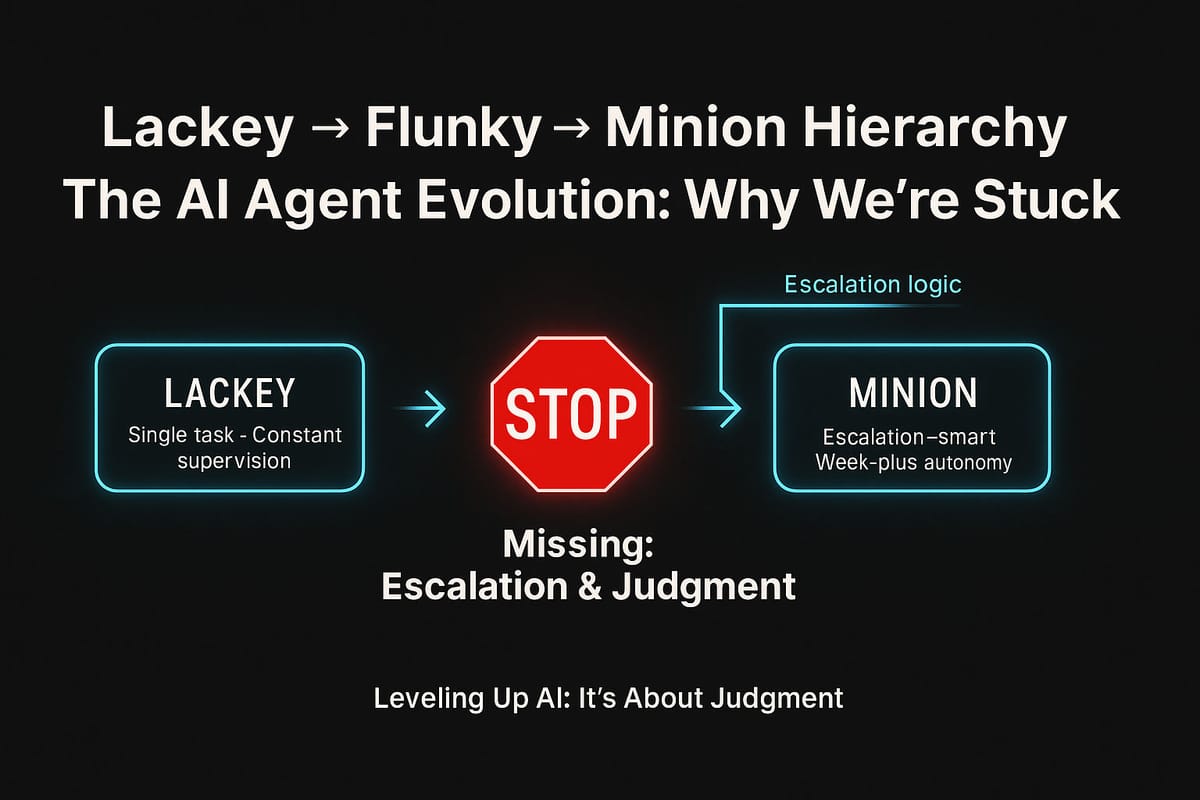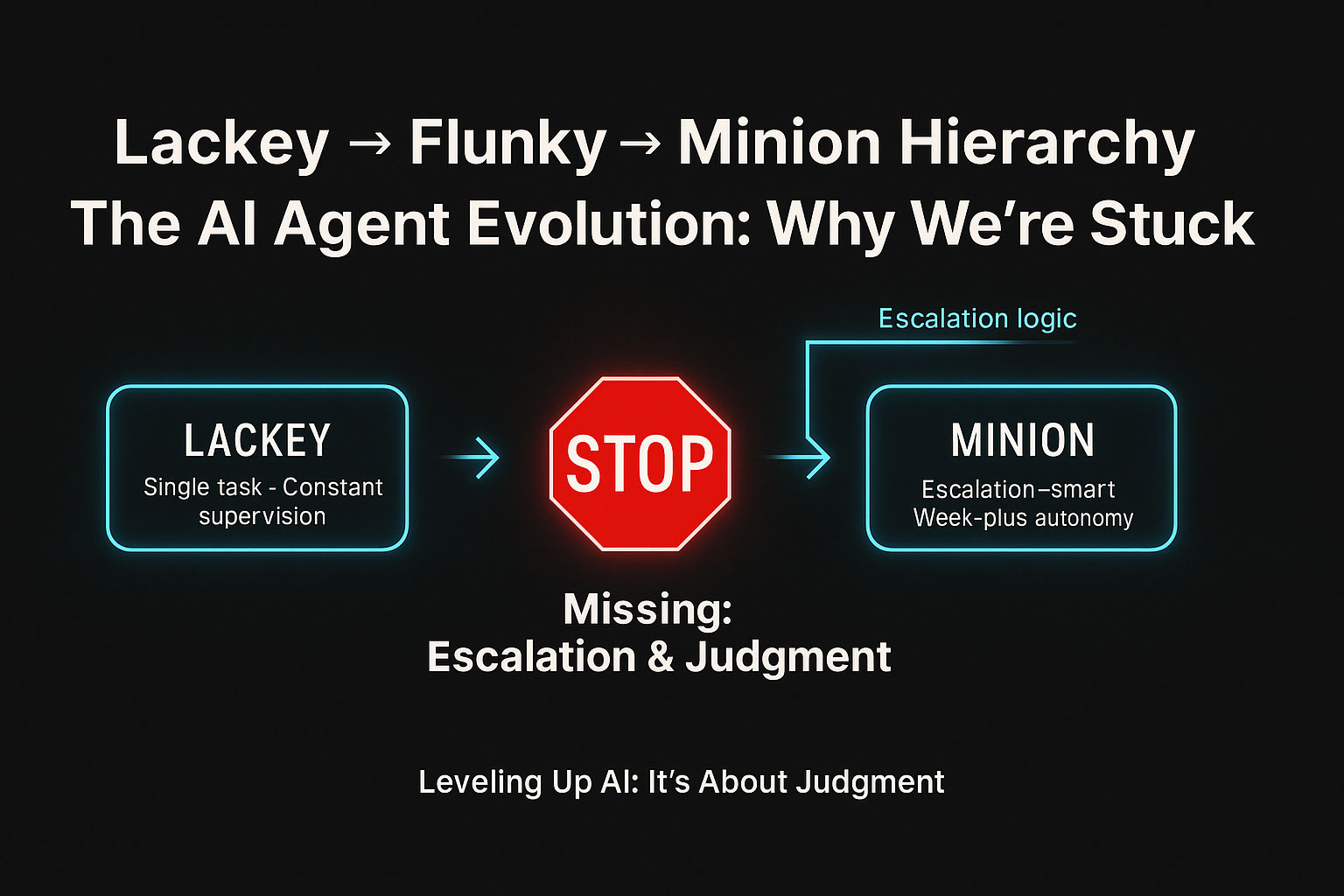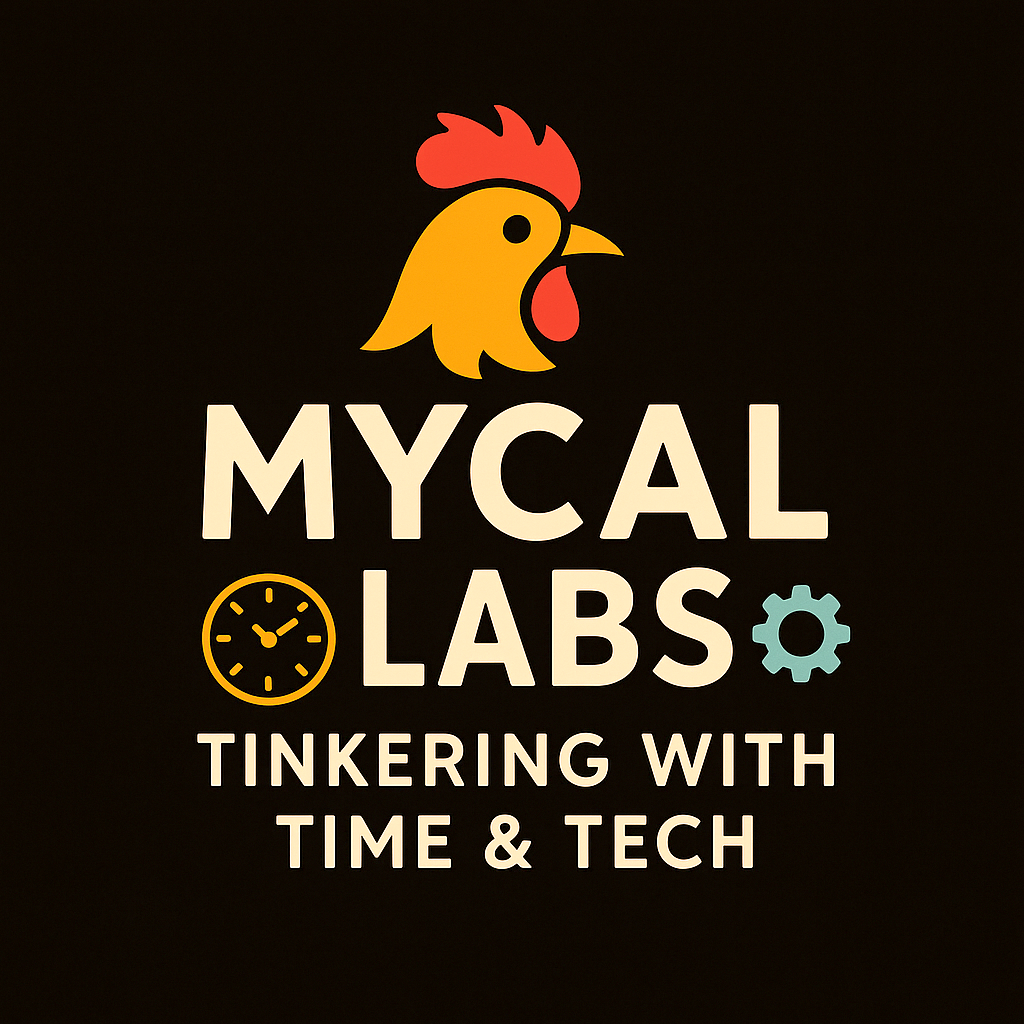The Delegation Hierarchy: From Lackeys to the Dream of AI Minions
An oldschool Mycal-ism on autonomy: Lackey → Flunky → Minion. From teams to AI agents, the limiting factor isn’t compute—it’s reliability and judgment. Here’s why we’re stuck at flunky and what’s missing: confidence scores, real escalation, and persistent state.

Tinkering with Time, Tech, and Culture #16

An oldschool Mycal-ism for humans and AI agents
We listened to a guy talk about delegation yesterday, and I had to laugh—I’ve had my own version nailed down for years. It’s oldschool, simple, and it still works whether you’re managing people, projects, or a fleet of AI agents you’ve built yourself.
This hierarchy clicked hard once I started building agents for my own daily tasks—digital proxies meant to run without me. They could handle the first few steps, but the moment they hit ambiguity or error—broken link, unclear instruction, conflicting data—they stall, fabricate, or loop. That’s not autonomy; it’s operational drag.
The problem wasn’t compute; it was reliability and trust—the same problem in human delegation.
I call it the Lackey → Flunky → Minion hierarchy. It’s my shorthand for levels of autonomy—and it maps cleanly onto AI today.
The Human Version: Understanding the Ranks
Lackeys
People who can get something done, but only for an hour or two before mistakes creep in. They need constant supervision. Give them tightly scoped tasks and plan to check their work frequently. (Think: a new intern restructuring a spreadsheet.)
Flunkies
A step up. They handle multi-step tasks and can manage a few lackeys. They’ll run solo for a day, but when complexity hits they wing it—and often miss.
Minions
Top of the food chain. With clear initial instructions, they can run for a week or more, manage flunkies and lackeys, and—crucially—escalate the moment they hit a serious problem instead of trying to cover it up. They know their limits and call in help before damage accumulates.
This was my shorthand long before anyone talked about “agents.”
The AI Agent Version: Mapping Autonomy to Code
AI Lackeys (single-prompt wrappers / basic scripts)
- Human parallel: Can work briefly with close supervision.
- Reality: Single-purpose scripts or simple API calls. Great at one step (summarize this doc), unreliable at chained reasoning (cross-reference sources, extract deltas, draft an email). They require constant validation.
AI Flunkies (multi-tool chains: LangChain, crewAI, AutoGen, etc.)
- Human parallel: Handles multi-step work and supervises simpler agents; needs frequent review—especially when the path diverges from the script.
- Reality: They orchestrate tools and look independent—until a paywall, ambiguity, or flaky API appears. Then they stall, fabricate, or loop. Example: tasked to “research competitor pricing,” it hits a login wall; instead of escalating, it pulls stale cached data and produces a confident but false report. Framed well, they can run a day, but they still need check-ins.
AI Minions (future: escalation-smart systems)
- Human parallel: Week-plus autonomy; manages others; escalates when uncertain.
- Reality: Not here yet. True minions would be persistent, stateful, and escalation-smart—able to run long-horizon tasks, manage sub-agents, and know when to stop, ask for help, and resume cleanly.
What’s Missing: Judgment, Not Just Compute
Bridging flunky to minion requires one thing: judgment—confidence tracking, halt-and-escalate logic, and persistent state. Not just more tokens or parameters.
- Confidence & self-awareness
Score certainty at decision points; trigger escalation when confidence drops instead of guessing. - Escalate–halt–snapshot protocol
On hard errors or ambiguity, pause the workflow, capture state, explain the issue succinctly, and notify a human. Intelligent failure handling—not failure. - Persistent state & clean resumption
Durable memory across sessions and reboots. After a human resolves the escalated issue, the agent resumes from the exact point, integrating the new info without re-doing work.
That’s the difference between a tool that assists and a delegate that truly extends you.
Why This Matters
We’ve mastered Lackeys, we’re deep in the Flunky era, and we’re dreaming of Minions. Getting there isn’t about bigger models alone—it’s about wiring in judgment: interrupt handling, escalation logic, and task awareness.
Until then: watch your Lackeys, double-check your Flunkies, and keep dreaming of the day your AI Minion calls—not with a problem, but with a solution proposal it escalated, paused, and queued up for you.
